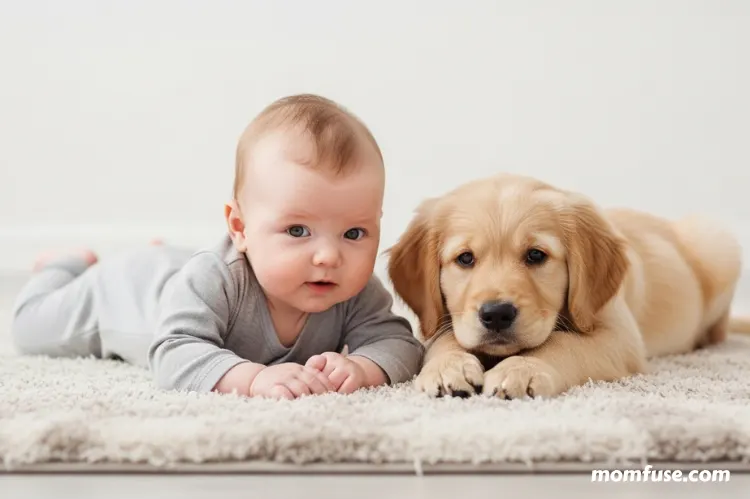Bringing a new baby into the family often prompts a reevaluation of home dynamics, routines, and relationships. For households with dogs, or those considering adding a puppy to the mix, the question arises, how do these animals influence infant development? The presence of a puppy can shape a child’s earliest experiences in surprisingly meaningful ways.
From emotional bonding to physical activity and language growth, dogs may serve as an unexpected but steady presence in the formative months and years of life. The following sections explore how puppies contribute to healthy development across a range of areas, helping babies grow into more well-rounded individuals.
Emotional Development Through Gentle Companionship
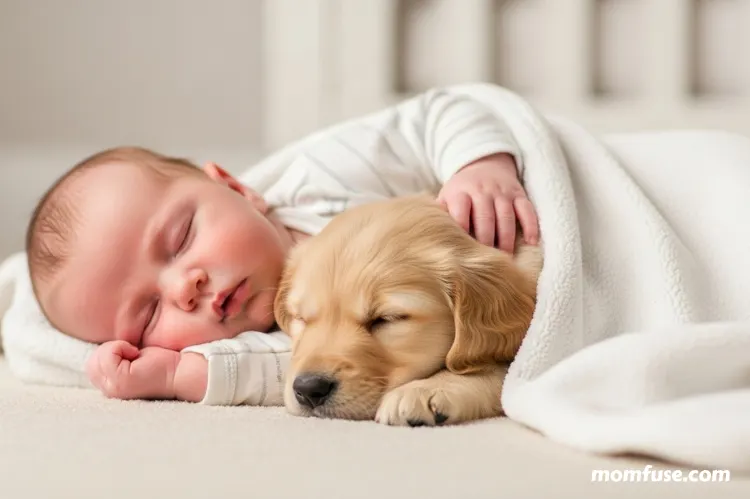
The earliest relationships children form often lay the groundwork for their sense of emotional security. Puppies, with their steady presence and simple affection, create a unique atmosphere for emotional learning. Babies are remarkably receptive to cues from those around them, including animals. The warmth of a puppy curled beside a child or the quiet padding of paws across the room can offer subtle reassurance that builds confidence and trust over time.
In families thinking about adding a pet, timing plays a key role. Some parents begin their search during pregnancy or shortly after birth. If you are looking for Las Vegas puppies for sale, consider the potential of this early pairing to support emotional growth. A puppy raised alongside a baby becomes more than a companion, it becomes a mirror for expression, a target for affection, and often the first non-human friend a child comes to understand.
Building Immune Strength and Physical Resilience
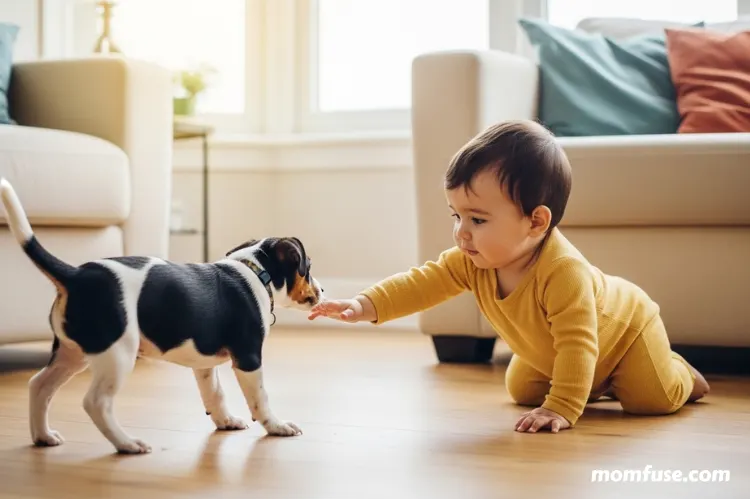
Daily exposure to a dog’s natural microbiome has been linked in several studies to increased immune strength in infants. Early contact with pets may reduce the likelihood of developing allergies or asthma. Living with a puppy introduces low-level environmental bacteria that gently challenge the baby’s immune system, helping it mature more robustly than it might in more sterile conditions.
This exposure happens passively. Babies crawl across floors where dogs walk, share space where fur settles, and often touch or mouth objects a puppy may have sniffed. While it may sound counterintuitive to traditional hygiene standards, such interactions have been observed to encourage a healthy immune response. Over time, this early conditioning may support the development of stronger defenses against common infections.
Language Growth Through Observation and Interaction
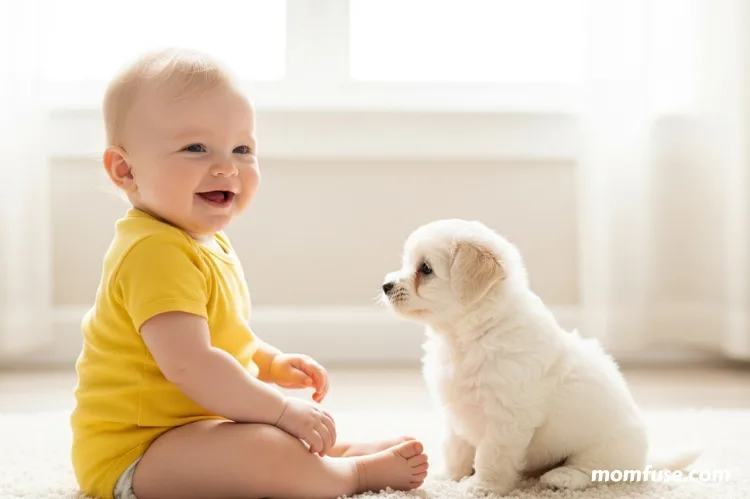
Puppies don’t speak, but they listen, and babies quickly notice. The way adults communicate with pets, using simplified phrases and a sing-song tone, can mirror the patterns used when speaking to children. This repetition helps reinforce early vocabulary. A baby hearing “sit,” “come,” or “good boy” repeatedly in context begins associating these sounds with specific actions and outcomes.
What’s more, dogs are often the subject of conversation, offering a natural way to introduce new words. “Look at Bella’s ears,” or “Charlie’s tail is wagging,” gives babies verbal tools to describe their environment. As they begin forming their first words, a dog’s presence often serves as a prompt. Many parents report “dog,” “puppy,” or the animal’s name as one of their child’s earliest words. These interactions plant early seeds for language development in an engaging, emotionally warm setting.
Establishing a Sense of Responsibility
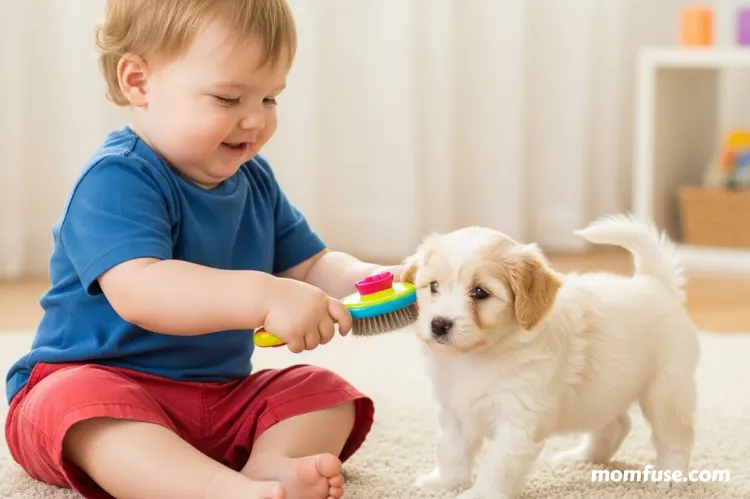
While a baby won’t be walking a dog or measuring kibble any time soon, they begin to internalize patterns of care early. They see their parents feeding, brushing, and cleaning up after the puppy. These repeated behaviors create a model of responsibility that children absorb long before they’re able to help. They come to recognize that the puppy has needs, routines, and boundaries.
As toddlers grow, many begin mimicking these tasks. A young child may bring a water bowl or attempt to brush the dog, even if clumsily. This imitation shows the beginning of empathy and responsibility. Caring for another being, even in small ways, cultivates emotional awareness. The process of nurturing a pet prepares children to handle other caregiving roles in life, whether it be with younger siblings, classmates, or eventually, pets of their own.
Promoting Calm and Reducing Anxiety
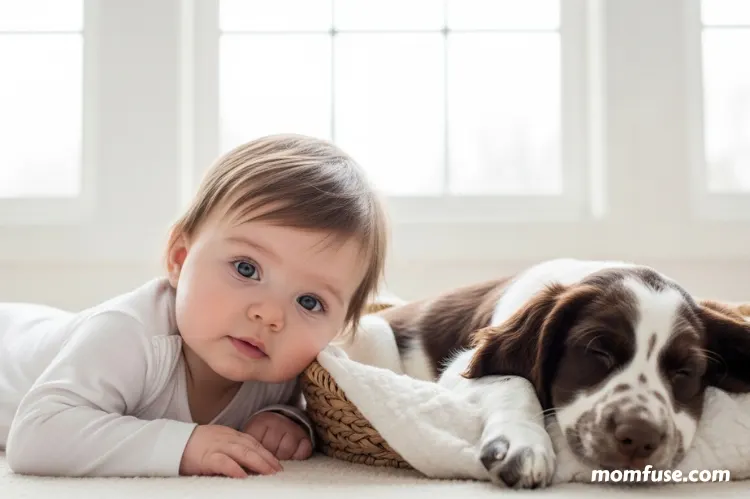
A home with a puppy tends to echo with playful energy, but there’s a surprising tranquility in the bond between a young child and a dog. Physical contact with animals, stroking fur, lying beside them, or watching them sleep, can produce a calming effect. Even infants seem soothed by the presence of a gentle pet.
This calming influence becomes especially valuable during transitions, such as weaning, starting daycare, or moving homes. The presence of a familiar, nonjudgmental animal helps anchor the child’s emotions during uncertainty. Studies suggest that children exposed to animals early may display lower levels of anxiety and stronger coping mechanisms as they mature. The steady companionship of a puppy offers something few toys or gadgets can: a source of comfort that responds intuitively to a child’s presence and needs.
Puppies hold the quiet power to shape a child’s early world in thoughtful and beneficial ways. From emotional connection to physical development and language acquisition, their presence can introduce lessons that stay with children long after infancy. It becomes part of the child’s story, a thread woven into the daily rhythms of growth, learning, and love.
Read Next: 8 Fun and Simple Fine Motor Skill Activities for Young Children

